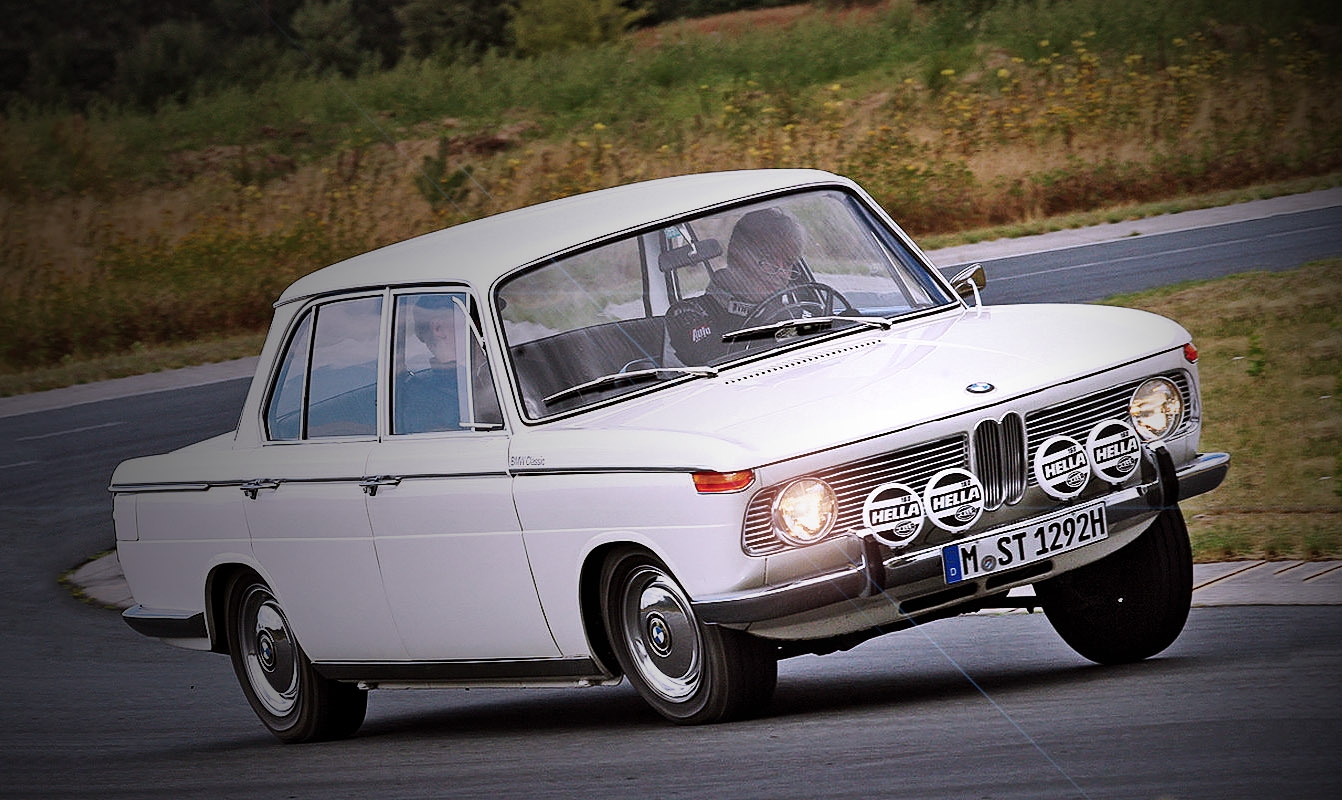
1964 BMW 1800Ti giant road test. In the years immediately prior to World War II, the BMW cars, marketed as Frazer Nash-BMWs, had an enthusiastic following in this country. Until two years ago, this German company, with headquarters in Munich, did not make an equivalent to these pre-war favourites, but at the Frankfurt Show in 1960 a new 1500 was presented as a prototype, and it had an enthusiastic reception.
It has proved to be a modern successor to the earlier 300 series: it is an elegant five-seater saloon styled by the Italian, Michelotti, has an overhead camshaft 1.5-litre four-cylinder engine, all-independent suspension, and is competitive in price. Recently an additional model, the 1800, supplemented this range; it has a larger, 1,773 c.c. engine, achieved by an increase of bore and stroke, but otherwise is basically similar to the 1500. This model will be available shortly in the U.K., but our test was conducted on a left-hand drive version in Germany.

The power output of the 1800Ti is 110bhp net — 30 bhp more than the 1500. The mean maximum speed on the test car was 99.8 mph. As there were only 1,100 miles on the clock when the test began, one could certainly expect a slightly higher top speed and better acceleration with further running. Even so, 19-0sec for the standing start quarter-mile is very good going.
There are not many European five-seater saloons of under two litres engine capacity that can better these figures. When related to an overall fuel consumption of 27-2 mpg, they are quite outstanding. Moreover, the roadholding and steering response reach the same high standards; the brakes are also in keeping with this performance and die ride is comfortable with the car lightly or fully laden. It is tractable at low, and quiet at high speeds, and for those who require even more performance, there is a Ti (Turismo Internazionale) version, with 110bhp engine; it will cost £168 more than the standard saloon in this country.
A few details of the 1800’s features will help to put it in perspective. The all-steel, four-door body is integral with a platform-type frame. It provides comfortable seating for five people and is not heavy at 21-2 cwt, with half-full tank. The engine is at the front and tilted to the right at 30 deg. The four-speed gearbox is in unit with it and has Porsche-type synchromesh on all the forward ratios; it is controlled by a central floor lever.
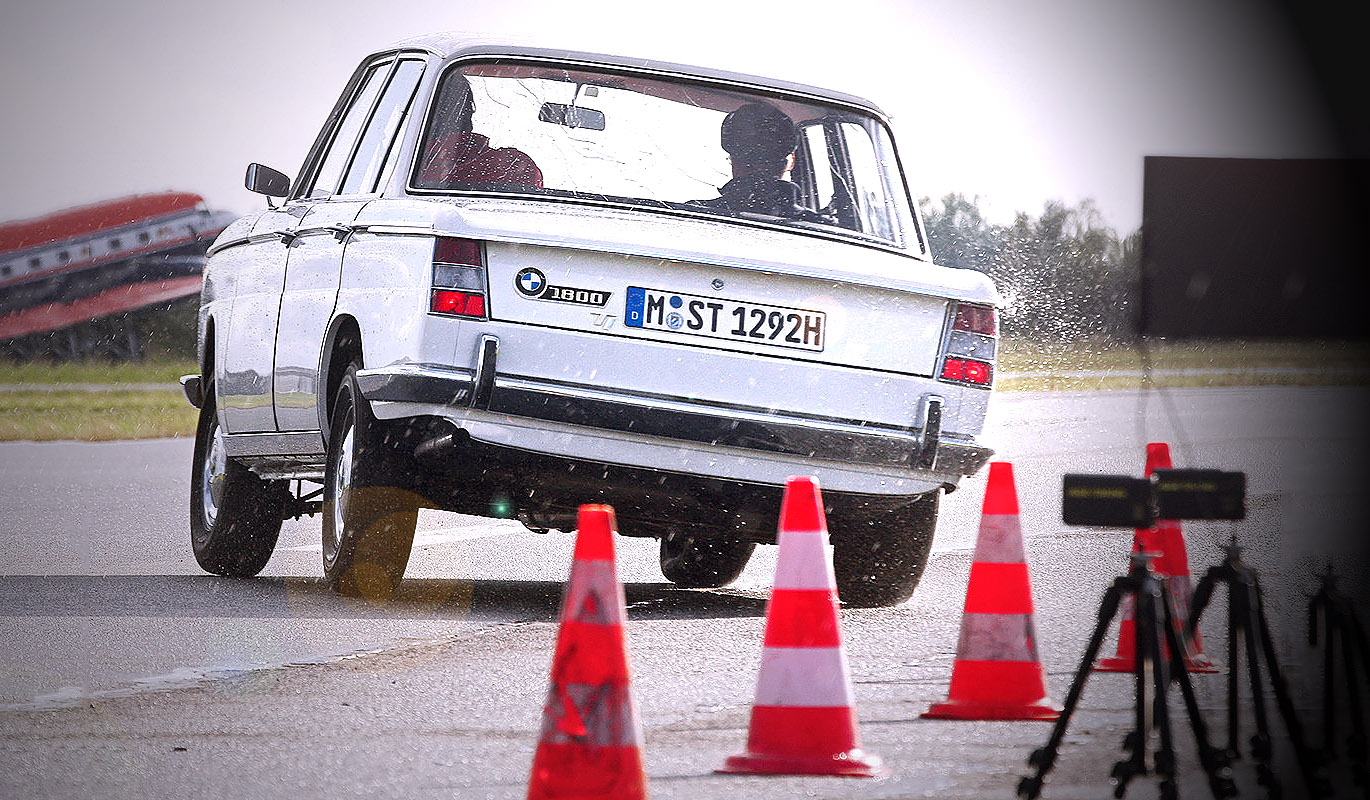
The lines are clean and individualistic. There are reversing lamps in each lamp cluster. Front and rear overriders have rubber inserts and the fuel filler is behind a hinged flap on the right side.
Front suspension is of the MacPherson strut-type. At the rear, the final drive is attached to the main structure and the wheels are suspended on semi-trailing arms with coil springs and telescopic dampers — rather like the new (1964) Triumph 2000, in fact. Dunlop-Teves disc brakes are used at the front, drums at the rear, the system having vacuum servo assistance.
A strong selling point for any motor car is what is known as showroom appeal. On this score the BMW is at once attractive, for the standard of trim and finish is very good; the only jarring note on close inspection is the use of a simulated wood finish stuck on the facia; this modern technique is well executed.
Room for Tall Drivers
This showroom appeal extends to the driving position, for the seats are immediately comfortable and of more importance, remain so after a journey of several hundred miles. The individual front seats have more fore-and-aft adjustment than any car which has passed through our hands in the last five years, so that even the very tall driver can find a comfortable position at the wheel. The backrests have fine adjustment for rake and with the seats fully forward they can be laid completely flat.

Few comparable cars provide such spacious accommodation as the 1800. The individual front seats have a fore and aft adjustment of 9in and the rear compartment knee room ranges from 5 to 14in.
The instruments and controls are sensibly grouped around the steering column, as illustrated in the facia drawing. There are levers beneath the steering-wheel at each side of the column. The right one selects dipped or main beams and will also flash the latter; the other has three functions. Moved in the same plane as the steering wheel, it selects the turn indicators; flicked up or down in line with the column, it switches on parking lights on either side of the car, and if pressed endwise, operates the screen washers and wipers through a relay switch. There is, of course, the normal facia switch for continuous wiping.
In Germany, it is compulsory to have a steering lock on all cars, an item which, incidentally, has reduced thefts considerably. This lock is incorporated in the starter switch, which is fitted to the steering column. It is not very accessible, and in the dark it is not easy to insert the key.
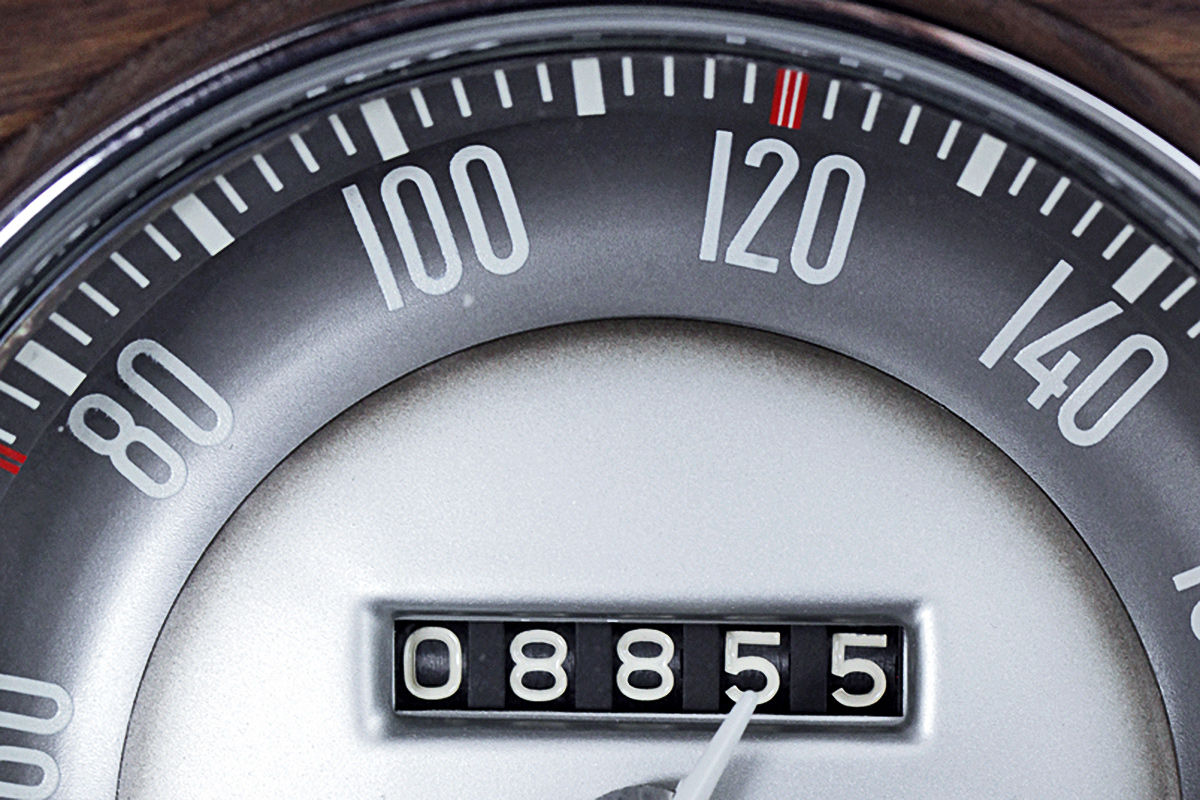
The 1800 has a manual choke control and on the test car, even in temperate weather, it was needed for at least three miles after an overnight stop. This slow warm-up period results partially from the lack of a hot-spot on the intake manifold; on the credit side, there was no hesitancy with hot starts. With the choke in use, the idling was very fast and in trying to reduce this by pushing in the choke, the engine stalled frequency until it reached normal working temperature. When the engine was warm, the pick-up was always clean with snap openings of the throttle.
With the recommended maximum engine speed of 6,200rpm, at which the peak road speeds in the indirect ratios were 27, 51 and 78 mph, it is understandable that the low speed torque is not very brisk. As a result, in city traffic frequent use must be made of the intermediates because the car will not pull strongly below 25 mph in top. Furthermore, the second and third ratios in particular are relatively high for a German car, but would be considered just right in this country. There were no engine or transmission vibrations throughout the speed range. Blipping the throttle in neutral produced a slight timing chain whine, and one became aware of carburettor intake roar when the engine was pushed beyond 5,000rpm.
Reference has already been made to the overall consumption of 27.2 mpg; German premium grade fuel was used. Throughout the test there was no sign of pinking, even with the engine labouring, and the car will thus operate very satisfactorily on the equivalent British grade. Most of the running was covered at high cruising speeds on autobahnen. With more gentle treatment an overall consumption of 30 mpg could be achieved. During the 1,018-mile test, it was necessary to add just under one pint of oil to the sump.
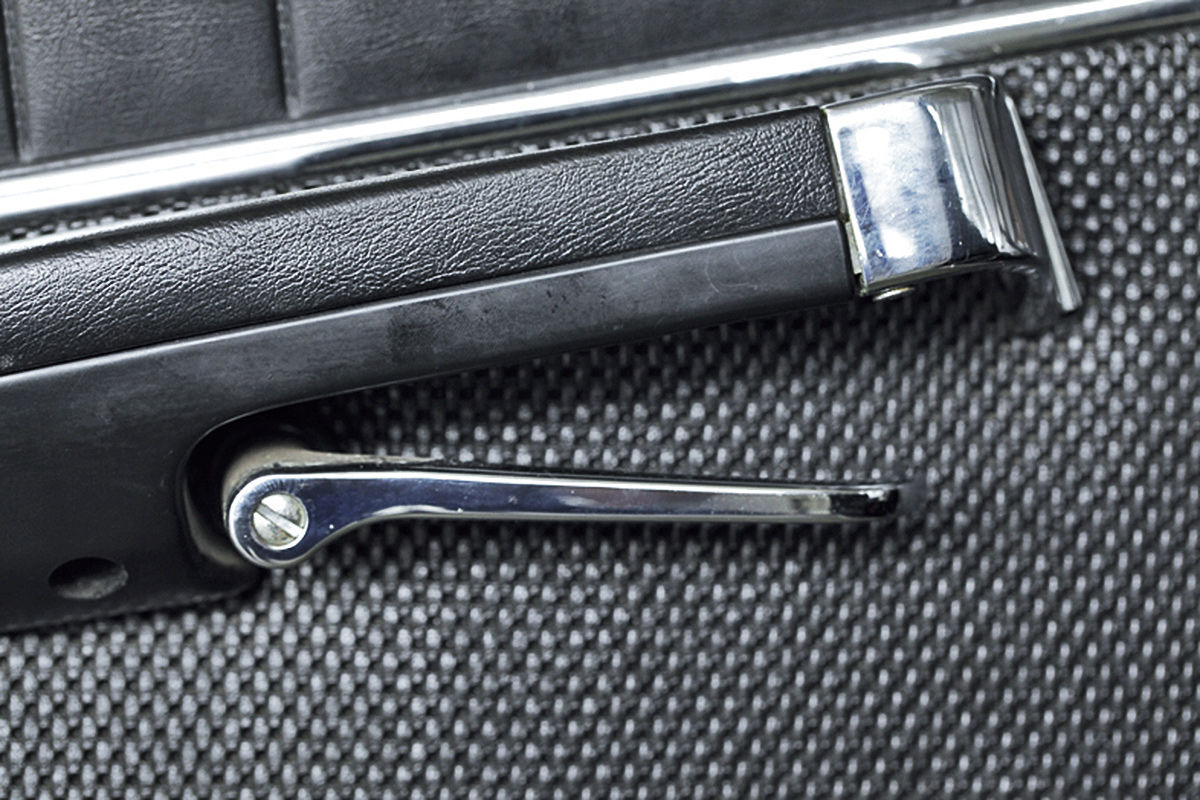
Left: Door trim is carried up to window height so that there is no exposed metal work internally. The armrests are hollowed to form door pulls with a catch-release beneath. Individual levers for reach and squab rake are on the outside of each front seat. Right: The boot lid has a torsion bar to assist lift and hold it in the raised position. The spare wheel is recessed in a floor well and covered by a corded carpet.
Gear selection is by a central floor lever with short movements in both planes of the gate, and the excellent synchromesh prevents gear crash even on snatch changes. It has slight resistance at the initial point of engagement and occasionally there was difficulty in obtaining first gear from standstill. Clutch operation was light, aided by well-designed hanging pedals, and engagement was always smooth, even during the harsh standing-start tests.
As will be seen from the data tables, brake performance was very good, with a maximum stop of 0.88g and a pedal load of 75lb. Beyond this figure, with two occupants in front, the rear wheels locked, but this would obviously not occur with the car fully laden. It proved impossible to fade the brakes during severe use on mountain descents, even though the front disc pads produced some very hot smells. The only indication of the work being done by the brakes in these conditions was an increase in pedal load and travel. Of more importance is the fact that they remained in balance and could be used with confidence in a bend. The handbrake has a pull-up lever between the front seats and, as the figures show, it was very effective. The rear wheels could be locked with quite a small effort.
Handling characteristics of the 1800 are completely neutral, and even when the car is driven very hard through sweeping bends, the steering remains light and responsive. The independently sprung rear wheels are provided with quite noticeable negative static camber and this no doubt contributes to the wheel adhesion. On a roughly surfaced bend the rear end hops slightly, but has no effect on steering control. This characteristic disappears when the rear seats are occupied and, therefore, is presumably a function of the damper settings. In the wet, and with the car fully laden, the rear wheels maintain surprisingly good contact with the road. One up, the back slides out first, but remains quite controllable. The angle of roll in comers is less than average, so that the passengers rarely have to make use of the grab handles formed in the armrests.
German autobahnen, particularly those which have had hard use for many years, are notorious for searching out any tendency to body shake in a car. The BMW 1800 was creditably free from this malady. At around 72-75 mph, a representative cruising speed, there was a slight body resonance and at speeds above 50 mph, almost irrespective of road surface, the rear comers of the very wide bonnet vibrated; as one side is always in the driver’s line of vision this becomes rather trying. Secondary roads in Germany are not very familiar to visitors. They can be extremely bad, with poor surfaces and severe cambers,’ and are quite a test of a car’s inherent stability. The 1800 rode them well, needing little correction to maintain a straight course.
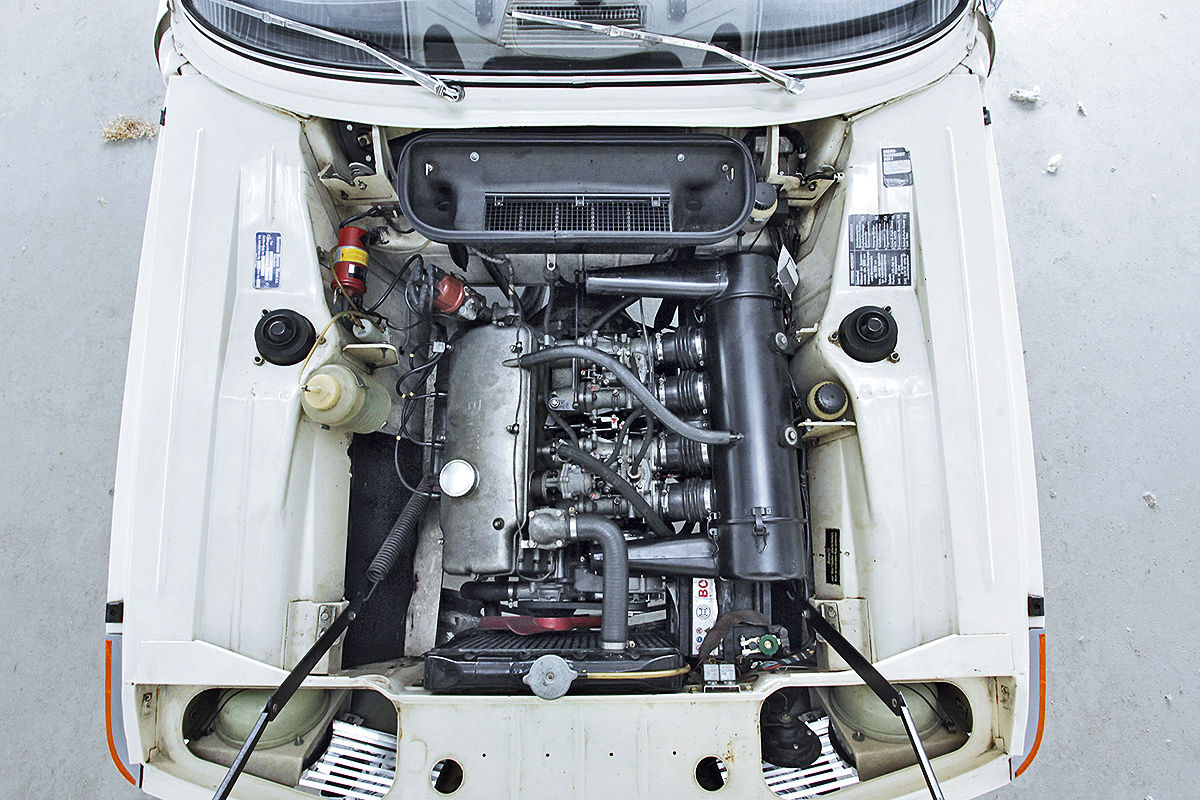
The front-hinged bonnet is self-supporting when opened and has noise-suppressing quilts. The junction box to the right of the radiator incorporates a thermostatic flap valve for controlling carburettor air temperature. Rather surprisingly, six-volt electrical equipment is used.
On cobbled surfaces the rear suspension is quite harsh and there is noticeable tyre thump, a characteristic which we have encountered before on cars having the trailing arm- type suspension. On better surfaces the suspension is much smoother and recurrent undulations in the surface are well damped to provide a very level ride.
Much thought has been given to seating comfort on this car. The cushions of the individual front seats give good support under the thighs and are cupped slightly, which, in conjunction with the curved and high backrests, provides good lateral support. This is aided further by trim in a hard-wearing nap cloth with p.v.c. edging. These materials are also used for the rear seat, which is set quite high from the floor. Three adults can occupy it in reasonable comfort, but the middle passenger does not have the advantage of the two depressions provided in the squab. The feet can be tucked beneath the front seats, which have rounded and padded lower edges, and rested on ramps formed in the carpet-covered floor.
Noise, particularly that resulting from wind roar, can detract from the comfort of any car. On this one there can be no criticism from this score; even at its maximum speed there is only a slight whistle around the leading edges of the front quarter vents, which are moved by a resilient plastic handwheel.
Internal safety has received much attention; for example the trim panels are padded, with rounded top edges where they terminate at window level. There are also flexible plastic steady handles in the roof for each passenger. Travel oddments can be stowed in a facia locker, the pockets in each front door and also those behind the front seats.
Standard equipment includes a fresh-air heating and ventilation system, which has little natural ram. It was found that the two-speed booster fan was needed most of the time for good ventilation, and even then air volume was not very great. As a compensation, the side windows could be lowered fully without the occupants being buffeted at speeds below 90mph.
While in Germany the opportunity was taken to make a short run in the TI version of the 1800. This is basically similar to the standard saloon, but has stiffer damper settings. The extra power increases the maximum speed by approximately 6mph. The engine is more obtrusive because the air silencer for the twin carburettors is less efficient than on the saloon. It was not possible to take performance figures on this car, but it has an obviously livelier acceleration and loses little in flexibility.
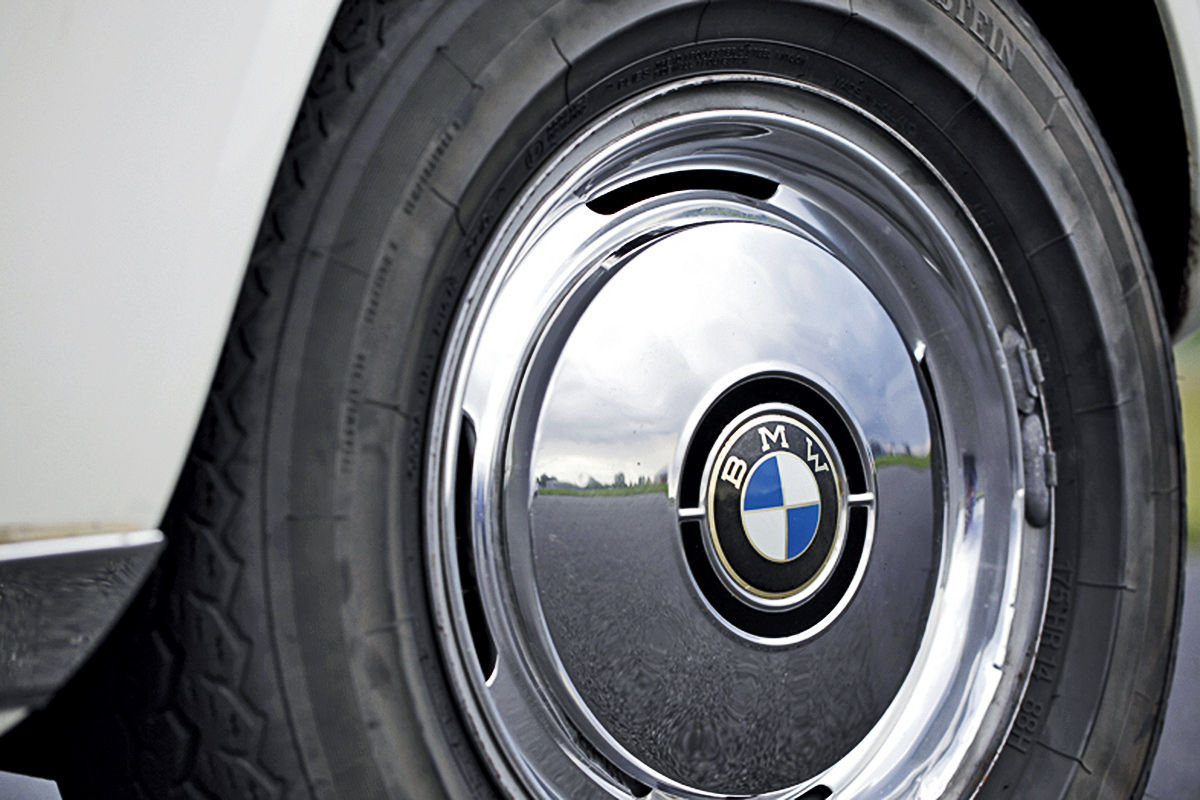
When writing of imported cars, one often has to qualify praise for them with the reminder that the U.K. price is very much inflated. This is not the case with the BMW 1800, for at £1,440, which includes many items sometimes regarded as optional extras, it represents very reasonable value when compared with most of its competitors. Of the car itself, there can be criticism only on minor matters. It handles safely, rides comfortably and has a very fair performance. The standard of finish and all that is covered by the term “engineering” is in the best BMW tradition. In brief, it will appeal to enthusiasts for the marque and attract new ones.
|
ENGINE Cylinders Bore Stroke Displacement Valve gear Compression ratio Carburettor Fuel pump Oil filter Max. power Max. torque |
(Front mounted, water cooled) 4 in-line 84mm (33 1in) х 80mm (31 5in.) 1,773 c.c. (115-2 cu in.) Single o.h.c., opposed valves and rockers 8-6-to-1 Solex with manual choke Mechanical, diaphragm type Full flow Renewable element 110 b.h.p. (net) at 5,250 r.p.m, 116 lb. ft. at 3,200 r.p.m. |
|
TRANSMISSION Clutch Gearbox Overall ratios Final drive |
1 Single dry plate Four-speed all synchromesh (Porsche type) Top 4-22, 3rd 5-61, 2nd 8-75, 1st 16.12, reverse 17.54. Hypoid bevel, 4.22 to 1 |
|
CHASSIS Construction |
Platform type frame integral with steel body |
|
SUSPENSION |
|
|
Front |
Independent MacPherson type struts with integral dampers and co-axial coil springs: transverse lower wishbone |
| Rear | Independent semi-trailing arms, coil springs and telescopic dampers |
| Steering | ZF Gemmer worm and roller |
| Wheel dia | 16.5in |
|
BRAKES Type Dimensions Swept area |
ATE-Dunlop hydraulic with servo assistance, discs front, drums rear F, 10.5in. dia; R, 9.85in. dia. 1.58in. wide shoes F, 205 sq in.; R, 97 sq in. Total: 302 sq in. (250 sq in. per ton laden) |
|
WHEELS Type Tyres |
Pressed steel, 4 studs, 4.5in. wide rims 6.00 — 14in. Continental Rekord Sport tubeless |
|
EQUIPMENT Battery Headlamps Reversing lamps Electric fuses Screen wipers Screen washer Interior heater Safety belts Interior trim Floor covering Starting handle Jack Jacking points Other bodies |
6-volt 77-amp. hr. 45-40 watt 2 6 Two, two-speed self-parking Standard, electric pump Standard, fresh air type Extra Cloth seats with p.v.c. edging. P.v.c. elsewhere Carpet No provision Pillar screw Two each side None |
|
MAINTENANCE Fuel tank Cooling system Engine sump Gearbox Final drive Grease Tyre pressures |
11 Lmp. gallons (including reserve) 12 pints (including heater) 8 pints. SAE 10W30. Change oil every 3,750 miles; change filter element every 3,750 miles 2 pints SAE 80. Change oil every 7,500 miles 1.4 pints SAE 90Hy. Change oil every 7,500 miles 3 points every 3,750 miles F and R, 24 p.s.i. (normal driving) F, 24; R, 27 p.s.i. (fully laden) |





